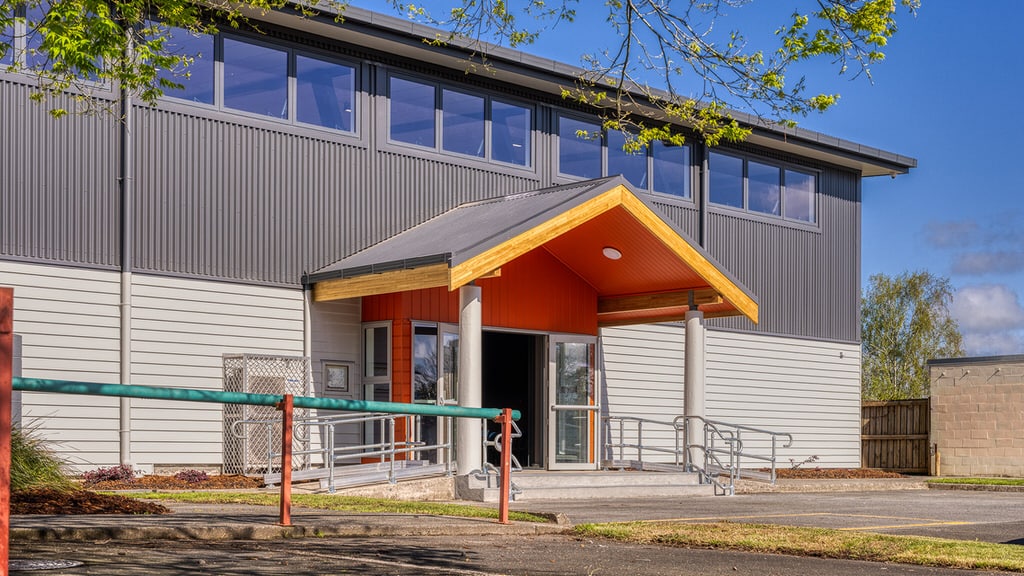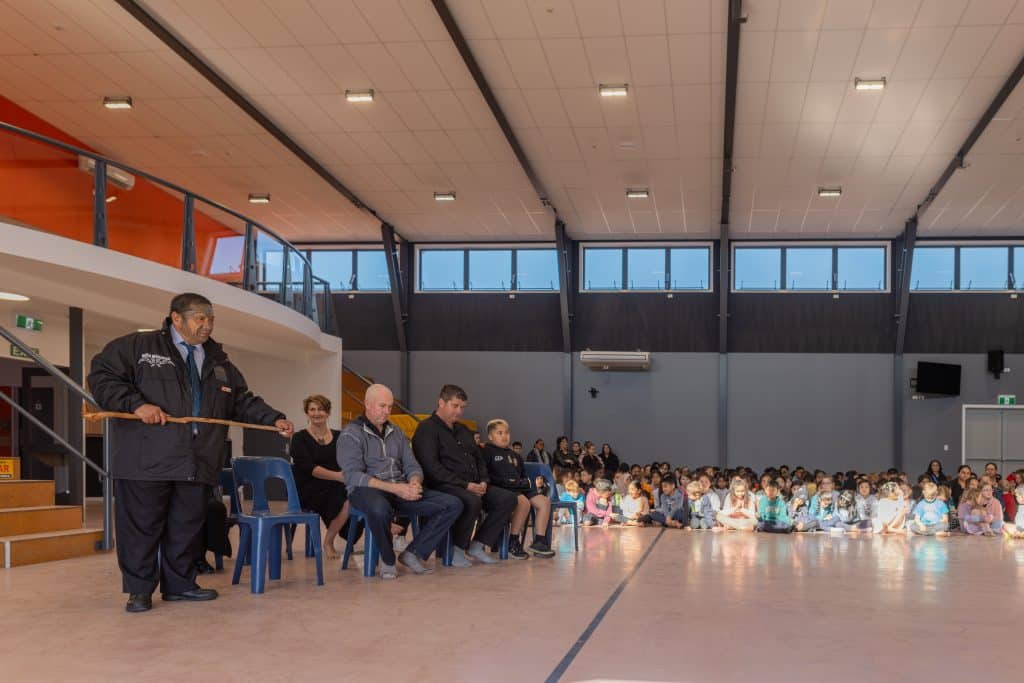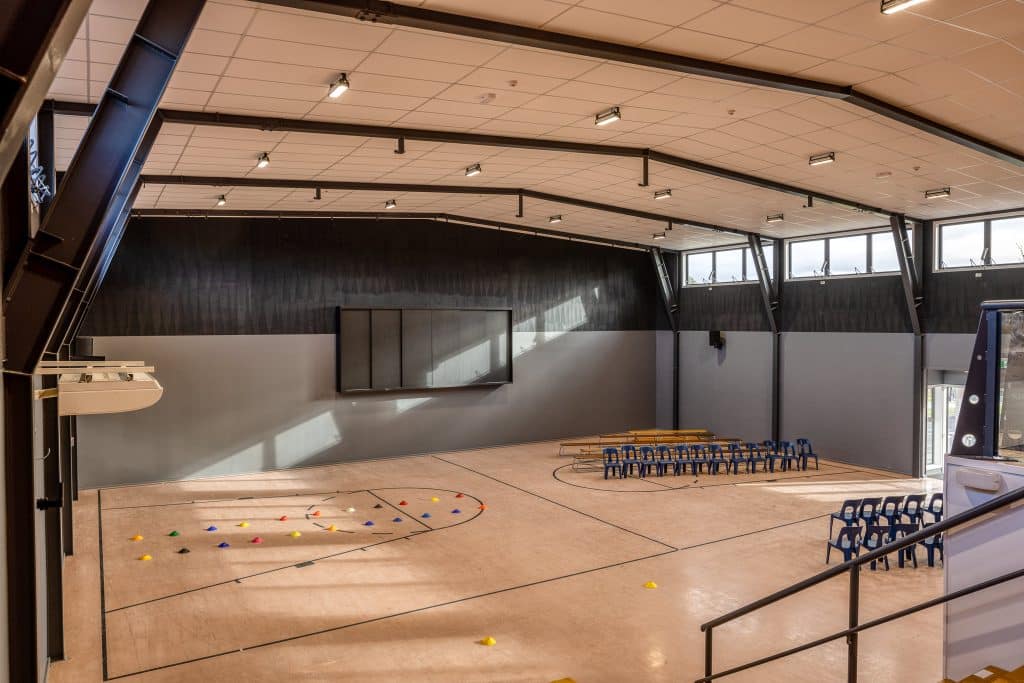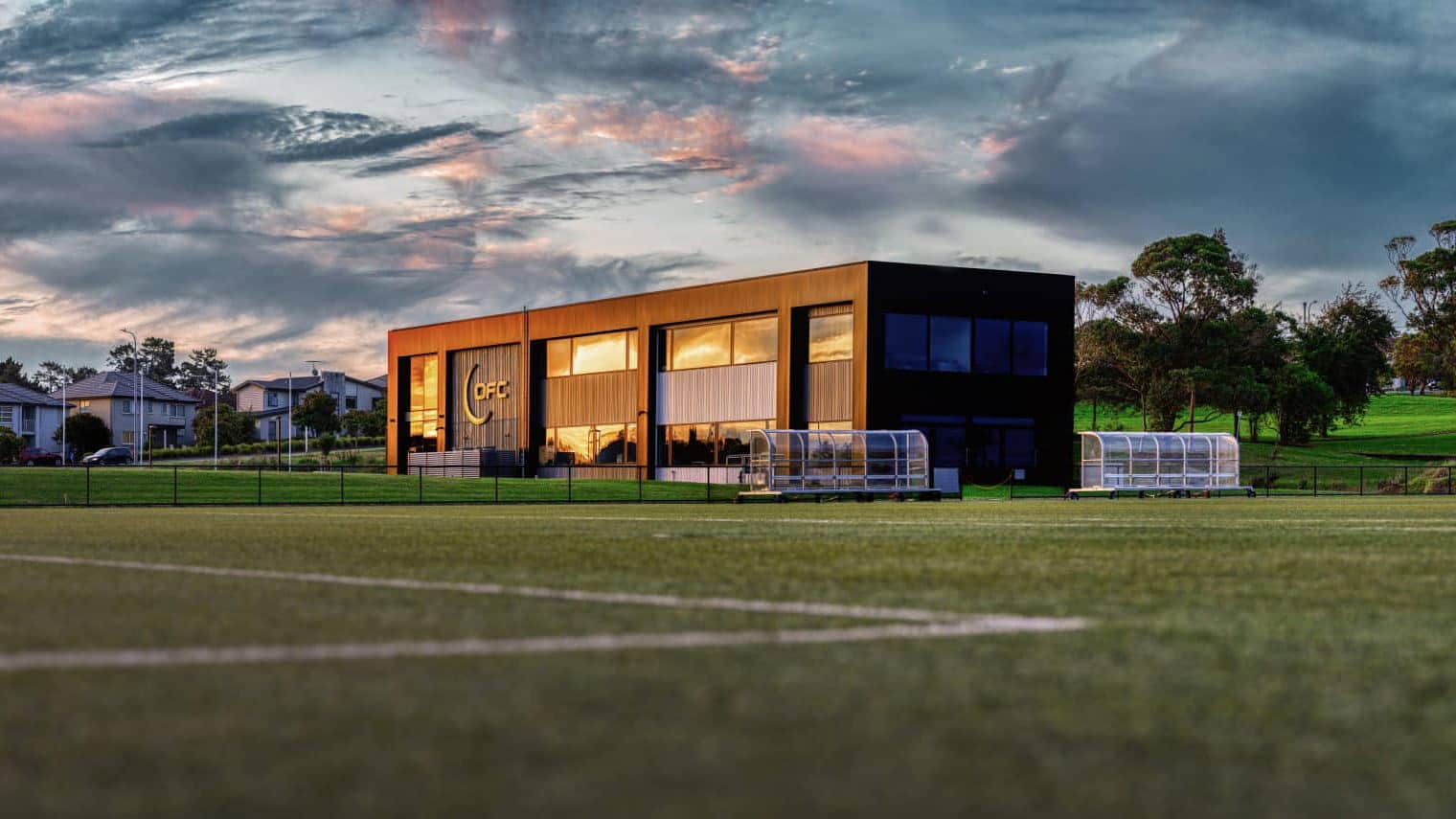Great result for school following remediation

Part of the Ministry of Education’s weathertightness remediation programme, the 1970s hall at Deanwell School in Hamilton was in one of the worst states our team had seen in recent years.
Several active leaks were regularly allowing water into the building, and the interior was dark with few windows, limited ventilation and mould and water stains on the ceilings and walls. The leaks were so bad that by the time Respond Architects was engaged as lead consultant, the entire building had been shrink-wrapped for a year to allow the school to keep using the facility.
Normally remediation projects such as this would be a case of replacing cladding or roofing like for like. But because the overall condition of this building was so dire, it presented an opportunity to deliver a much better outcome for the school. Our architects presented concepts to the MoE for a straightforward like-for-like replacement, and another for a more extensive redesign of the roofing structure, together with costings provided by our in-house quantity surveyors. With the costs and benefits clearly laid out as part of a feasibility study, the MoE opted for the redesign option.

One of the main changes to the building design was the replacement of the original sloping mansard roof with straight walls, featuring larger opening windows. “This was one of the best decisions we made,” says architect Cici Zheng. “It resolved the weathertightness issues, but it also added value for the school as it created a much larger volume space inside, with more natural lighting and ventilation.”
This aspect of the redesign presented challenges, as structural engineering was required for the new walls. Structural strengthening was also required for other parts of the building, and the gable end wall – located close to the property boundary – needed a 120-minute fire rating to comply with Building Code Fire Safety requirements.
“Having our engineers in-house was a very big advantage in terms of working through some tricky engineering and fire rating issues,” says lead architect, Natasha Cockerell. “Being able to do that face to face with our in-house structural engineers made a big difference.”
This collaboration led to detailed and well-coordinated multi-disciplinary designs, which resulted in a construction phase that ran incredibly smoothly and stayed on schedule – almost unheard of with remediation projects.
 Aside from solving the weathertightness issues and creating a bigger, brighter, healthier space, there were other benefits for the school too. With a high Māori roll and strong ties to the local iwi and marae, the school also wanted to refresh the entrance way to create a more welcoming formal entry for visitors. The entrance was reconfigured as a traditional waharoa (gateway) where the school could perform a pōwhiri (formal welcome) for guests. The wide maihi (barge boards) were added to enable the school to mount carvings or artwork.
Aside from solving the weathertightness issues and creating a bigger, brighter, healthier space, there were other benefits for the school too. With a high Māori roll and strong ties to the local iwi and marae, the school also wanted to refresh the entrance way to create a more welcoming formal entry for visitors. The entrance was reconfigured as a traditional waharoa (gateway) where the school could perform a pōwhiri (formal welcome) for guests. The wide maihi (barge boards) were added to enable the school to mount carvings or artwork.
The end result for Deanwell School is a modern, fit-for-purpose facility that meets natural lighting and ventilation standards, and fire safety requirements, as well as delivering significant additional benefits in terms of its appearance and amenity.




